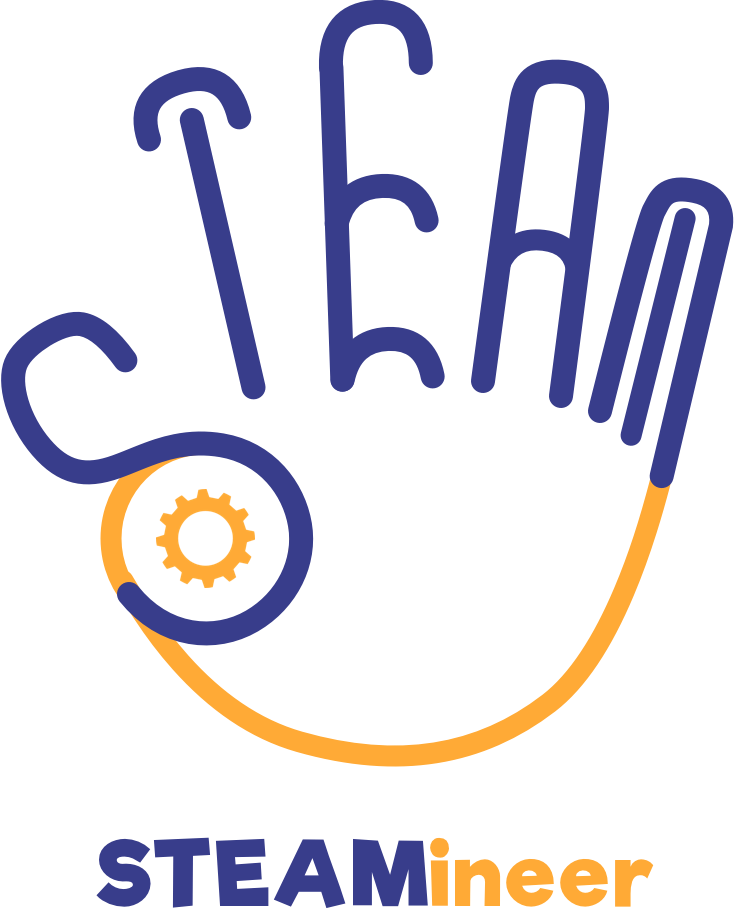Welcome to Week 15, the last week of the project. We are nearing the shore and after our final presentation and play-throughs, Team STEAMineer will disembark. However, that does not mean that our work has slowed down. During Week 15 we interviewed our last two playtest families, made final iterations to our game and instruction guide, and prepared our findings for our final presentation.
Monday Team STEAMineer met with the faculty and both families who participated in our final two playtests. In order to comply with social distancing, the team handled delivery and pick-up of the Arduino Kit to both playtest locations and collected the kit on Sunday after the final playtest. We had one family playtest Saturday with a facilitator and child, and one family playtest Sunday with a facilitator and two children. For both playtests families recorded their experience to share with the team and filled out a post-playtest survey. We also followed up with video conferences with our playtesters.
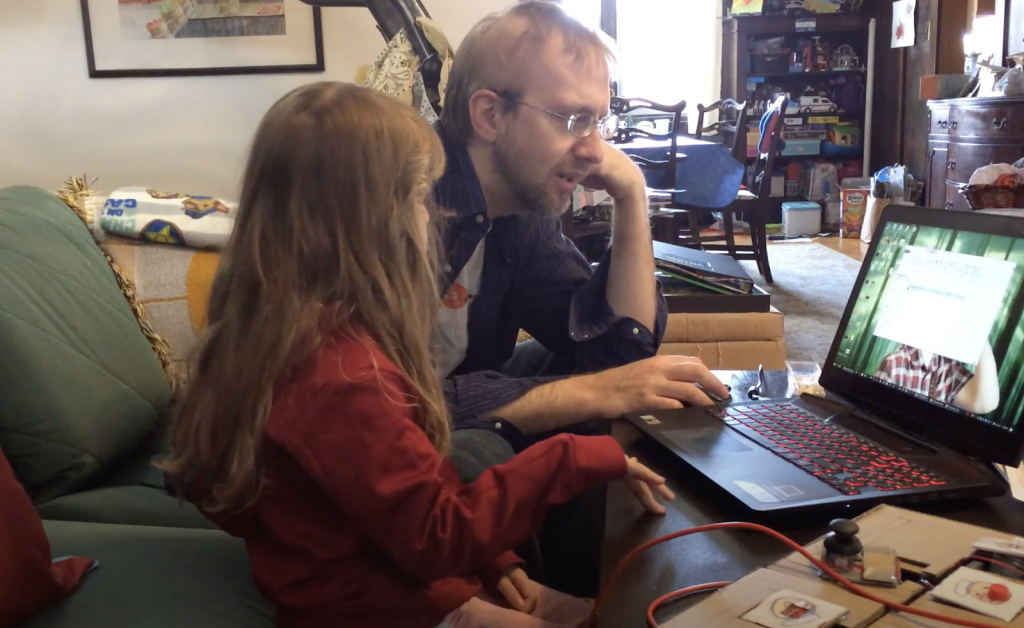
Our first set of playtesters were a family from Schell games, so not naive playtesters. The participants were a parent facilitator and a 6 year old participant. They hit a bug right out of the gate when the start button from the instruction screen had shifted from the graphics so it was no longer interactive. However, they quickly got a hold of the team, Mimi fixed the bug, and they were able to resume the activity. Other than finding the bug, this issue also highlighted that the instructions didn’t offer a lot of support or resources for players when things do not work. We didn’t include contact information in either the instructions or the email which does not give a lot of confidence to our players about the reliability of the instructions. From our observations, they correctly determined that our activity was two-player. For the keyboard interaction they divided the roles between themselves and played. There were comments about the lack of sound at the beginning, and lack of clarity on the game story or motivation for the gameplay. Our younger player did ask why she was collecting crystals and why Atlantis needed to be helped.
In our first playtest after softs both playtesters were excited to use the controller. The minute it was on the table, the younger playtester started touching the sensors and twisting around the panels to set them in place. This was exciting to observe, because it showed that our playtesters did want to interact with it, and could understand ways they might be able to manipulate it. Unfortunately, they did not manipulate it substantially and spend a lot of time repositioning the inputs. Their goal was to get all the sailors faces oriented the same direction. They cited the cardboard casing as the main reason for not moving the sensors around more. They did not want to break the controller. They felt like the wires also did not feel very sturdy. Once they got into the game and the testing space, they experimented with the inputs and used a combination of the motor, sound, and button inputs. Unfortunately they hit a bug where they were unable to collect crystals in the testing space. This led them to question the functionality of the sensors, which inhibited their ability to experiment and make decisions.
Similar to our first remote playtest, it was an issue of the instruction guide making promises the game couldn’t maintain. One thing the first playtesters did that we did not see in the second playtest, is that they understood the visual cues from the sailors. They identified the sound sensor as the sailor with the big ears. They cheered each other on in the space, and played multiple times. They did get better, but they never exceeded 19 crystals, so it did not seem like the end sequence was appropriately reflecting their progress. They continued to get the same message about Atlantis being “partially restored”. Their feedback also included the desire for pictures in the instruction guide (they relied on the printable version only), and clarification of the final goal. They also shared the suggestion that we use a more familiar material like LEGO Bricks as the construction material for our controller. That way players would understand that they can adjust the controller. Ultimately, they enjoyed playing the game, and wanted to keep playing– our younger playtester was disappointed to part with the controller. She also told us she preferred playing with the controller over playing with the keyboard.
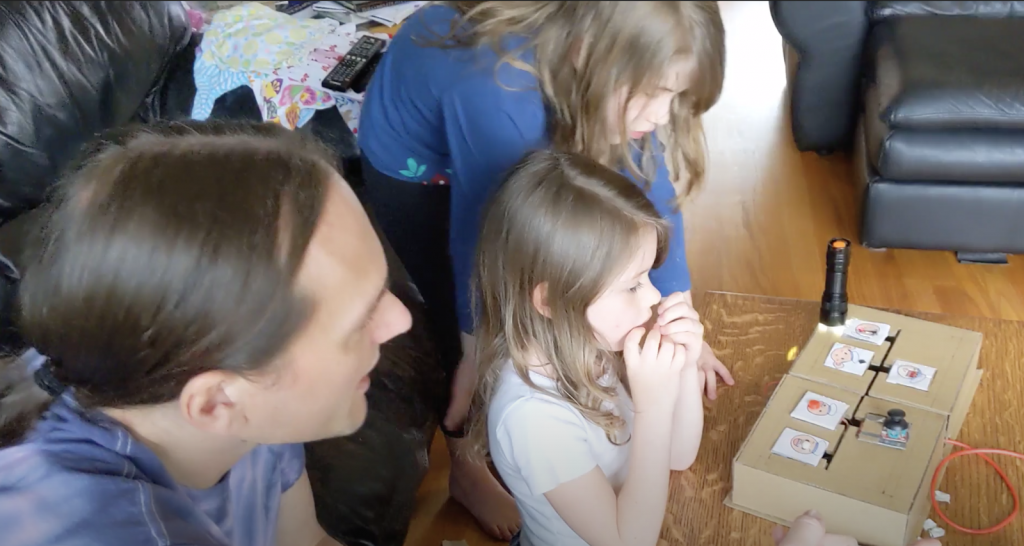
Our second playtest was also with a family from Schell Games, so again, not naive playtesters. This was our first remote playtest with two younger participants and one adult facilitator. We had two girls ages 5¾ and 9. As a team we were curious to see how the interaction would work with two kids. For this playtest our guests printed out the physical instructions and followed along. (They did also give us feedback that they would like more photos in the printable instructions.) Initially, both girls were interested in the same roles on the sub– shooting and collecting, but the older sister ended up managing the power and steering. We observed, and in the playtest video they also observed, the difficulty of trying to complete everything at once with two people. They noted that it was hard keeping up with one another to ensure tasks were completed and completed in a timely manner– like shooting the octopuses. The older playtester did not enjoy the power interaction and felt like the battery life was very short lived. They also remarked they would prefer the submarine become octopus proof, instead of shooting octopus, so a defense function in place of an attack function.
They were our only set of remote playtesters to complete the propeller challenge. An add-on activity where participants make a propeller for the motor input to help with steering. It was also an attempt on the team’s part to further encourage making in the process. While we were able to remedy the bug on the start screen for these playtesters, they also encountered the bug in the testing space, which detracted from the experience. Ultimately, they played through the game multiple times using different inputs and found a preferred input combination. They also shared that they would prefer the control panel to be more robust and to make moving the inputs more intuitive. They liked our music choice. They used printed instructions, and found them fairly helpful, but felt they could be more concrete, and have more tie-ins to the actual controller. (An error that probably occurred as a result of developing deliverables independent of one another.) Jason also gave us great suggestions about trying to scale up the controller inputs. Requiring more of a full-body interaction would put a greater emphasis on the making process.
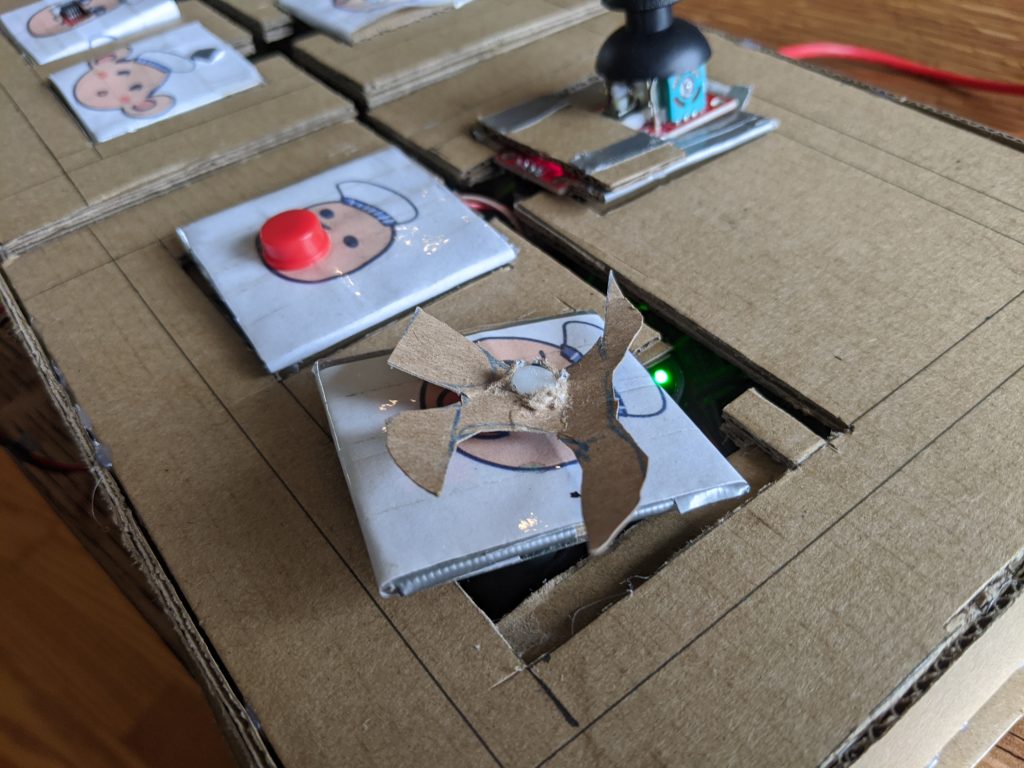
Following our playtest interviews, we compiled all of the potential tasks from the feedback into a shared document. As a team we prioritized what needed to be updated based on playtesting to ensure future useability. We accounted for our remaining time (~1 week) and what would be needed for hand-off. Ultimately, we decided to clarify player progress in our activity using three crystals clusters that become colored to show progress. (This was in addition to the changes in the light for the three end scenes, and text completing the narrative based on player progress.) We also added in a recorded voice over of the opening story. (Thank you Kristian for your help!) Max implemented a visual indicator that can be accessed with a hotkey for debugging purposes. It indicates whether or not the inputs are connected and working. We also fixed the bug where crystals were unable to be collected in the testing space and updated the UI in the game to indicate to players that it is a two-person experience. We also ensured the functionality of the sound sensor and temperature sensor– two inputs that were giving playtesters problems.
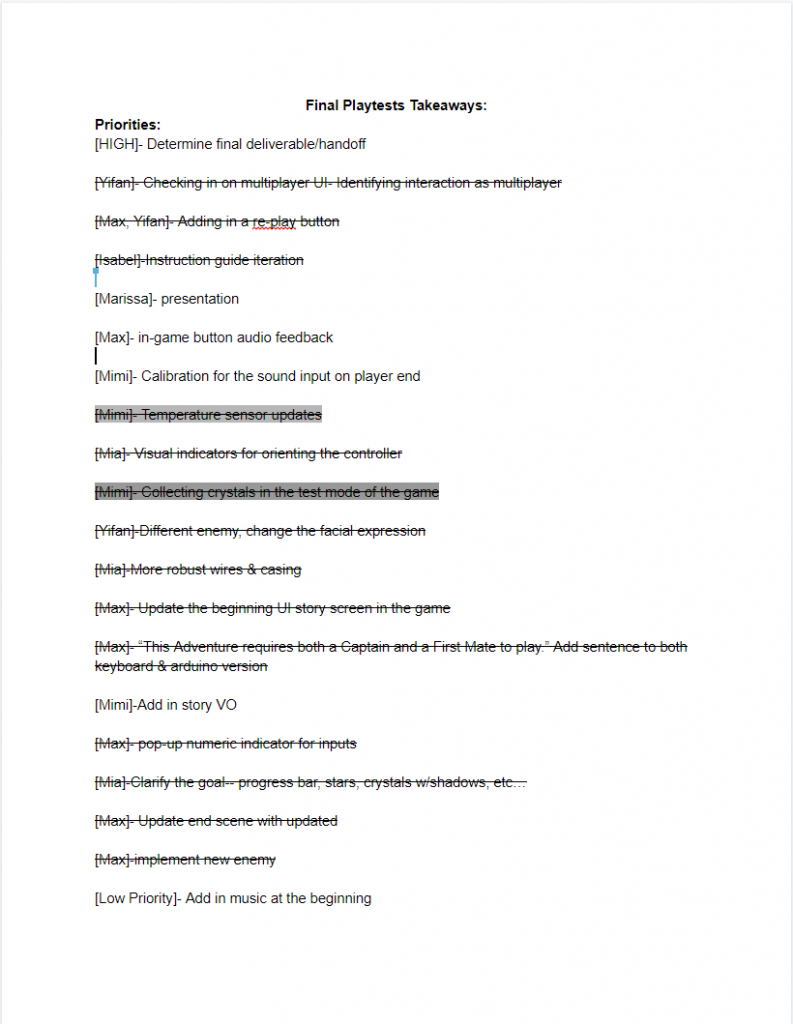
With the team clear on their objectives, we spent the remainder of the week fixing bugs, updating artwork, clarifying our instructions, and assembling our final presentation. We also reached out to John Balash to ensure he would have what he needed for hand-off. In the future John intends to try to implement the controller in after school programming or summer camp programming. He also hopes to add on things like a scoreboard or tournament to further encourage experimentation among students. With Mia’s digital files for laser cutting and 3D printing, John will be able to recreate the controller out of a more robust material. We also gave him a supply list, so he can create multiple controllers for a larger group of playtesters.
Want to see the final version of our instruction guide for kids? Check it out here: https://drive.google.com/file/d/1tYmp8bOTAijyKp03KGaJTbIfZOqKmYO2/view?usp=sharing
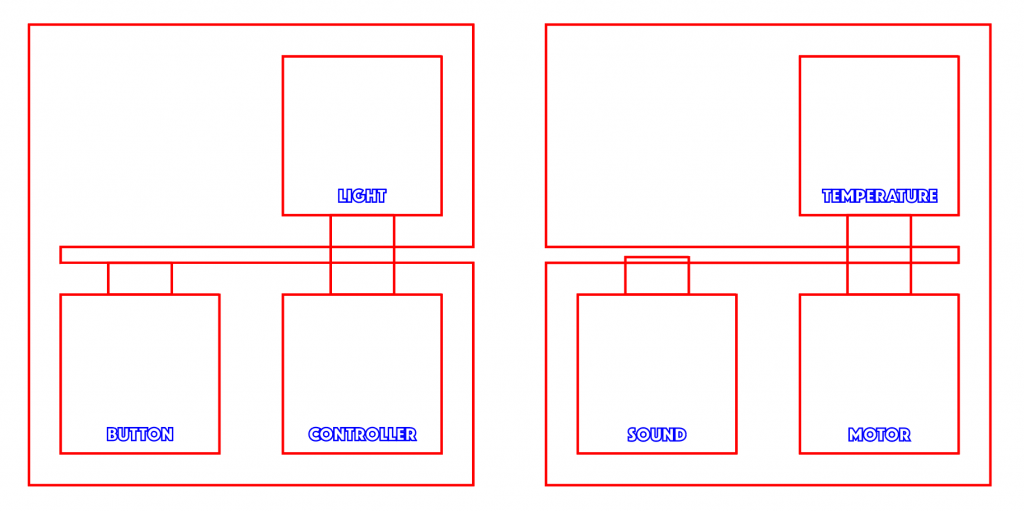
Thursday we met with our advisers to share our progress and go over our presentation. Although our slides were not yet presentable, our content and presentation focus got our advisers’ seal of approval. We included information about our iterations after halves, specifically in response to our transition to all remote work. We also highlighted our playtests and discussed the importance of identifying our playtesters as “non-naive”. This was both by design and out of necessity. Having guests playtest who are familiar with game design and maker technology meant that our testing was more about functionality for our activity and less about strangers being able to walk into our experience and understand it. It also gave our team the unique opportunity to learn from game design professionals. This audience is also closer to an audience like Assemble, where trained facilitators who are familiar with the technology would be presenting the activity to students.

As a team we would like to give a hand to those that lent a hand during our project. We would like to thank our advisers, Dave and Scott for their guidance and insight throughout our project.
Thank you to the many subject matter experts we talked to at the beginning of this project. It feels like it was ages ago, but learning about new insights and ideas informed our work and helped us find our direction.
We would like to thank Nina Barbuto, Anny Chen, Devon Dill, the team at Assemble, and all the students we playtested with. Thank you for giving us the chance to test our work with our audience and for partnering with us to give our project context. Thank you for sharing your time and your space.
Thank you to John Balash, for helping our project to live on even though the semester is wrapping up. Thank you for sharing your feedback and helping to connect us with resources.
Thank you to our playtesters for your patience and enthusiasm. Thank you for sticking with us when things didn’t go as planned and for sharing your opinions and perspectives so that we could make our activity better. Thank you for supporting playtesting even though circumstances are not normal.
Thank you for journeying with us on this adventure! We have certainly had some murky water and trouble operating our craft. However, our sailing has gotten smoother and we are better equipped to react to changing currents. We have a clear direction ahead and we are plotting a course so future sailors can navigate the sea of controller design.
Curious about our final presentation? Check it out here (We start at 1:41:40): https://www.youtube.com/watch?v=r-1N-g_k3ZM
